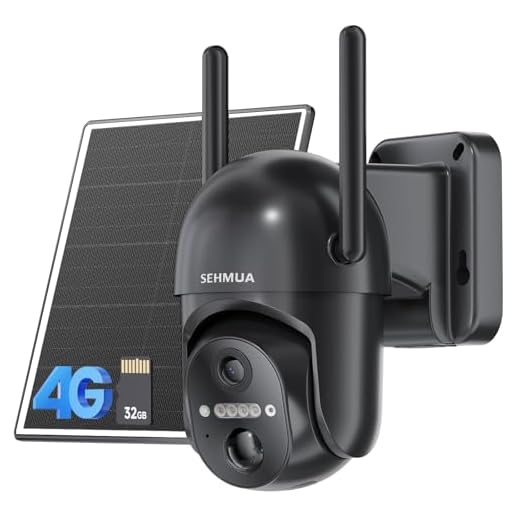


In today’s digital age, security cameras have become an essential tool for protecting our homes and businesses. However, not everyone has access to a reliable WiFi connection, which can make it challenging to use traditional WiFi-enabled security cameras. But fear not, there are still options available for those who want to enhance their security without WiFi.
One option is to use wired security cameras that do not rely on WiFi for connectivity. These cameras are typically connected to a digital video recorder (DVR) using cables, such as Ethernet or coaxial cables. This setup allows for a more stable and secure connection compared to WiFi-enabled cameras.
Another alternative is to use cellular security cameras, which utilize a cellular network to transmit video footage to a remote server or smartphone. These cameras are ideal for remote locations or areas with poor WiFi coverage. By using a SIM card, cellular security cameras can provide reliable monitoring and surveillance without the need for WiFi.
How to Set Up Security Cameras without Wifi
If you want to use security cameras without wifi, there are a few different options available to you. One option is to use a wired security camera system that connects directly to a DVR or NVR using cables. This type of system does not require an internet connection, making it a great choice for areas where wifi is not available or unreliable.
Another option is to use a cellular security camera system that uses a cellular network to transmit video footage. These cameras come with a SIM card and connect to the cellular network, allowing you to access the footage remotely using a mobile app. This can be a good option if you have a strong cellular signal in the area where you want to install the cameras.
Some security cameras also offer the option to use an SD card for local storage of video footage. With this setup, the camera records video directly to the SD card, eliminating the need for an internet connection. You can then remove the SD card and view the footage on a computer or other device.
Overall, there are several ways to set up security cameras without wifi, depending on your specific needs and preferences. By choosing the right system for your situation, you can ensure that your property is protected even without an internet connection.
Choose a Wired Security Camera System
When looking for a security camera system that doesn’t require Wi-Fi, consider opting for a wired setup. Wired security cameras are connected directly to a recording device or monitor via cables, eliminating the need for an internet connection. This type of system offers reliable and stable video monitoring without relying on Wi-Fi signals.
When choosing a wired security camera system, make sure to select cameras that suit your specific needs and budget. Consider factors such as camera resolution, field of view, night vision capabilities, and weather resistance. Additionally, check the compatibility of the cameras with the recording device or monitor you plan to use.
Install the Security Cameras
Once you have chosen the location for your security cameras and have prepared the necessary tools, it’s time to install them. Follow these steps:
1. Mount the Cameras
Mount each camera securely in the desired location using the appropriate mounting brackets. Make sure the cameras are positioned to capture the desired area effectively.
2. Connect the Cameras
Connect the cameras to a power source using the included power adapters. Run the necessary cables to connect the cameras to the DVR or NVR system. Ensure the cables are securely connected to avoid any issues with the camera feed.
| Camera | Power Source | Cable Connection |
|---|---|---|
| Camera 1 | Power Adapter 1 | Cable 1 |
| Camera 2 | Power Adapter 2 | Cable 2 |
Connect the Cameras to a DVR
If you are using security cameras without wifi, you will need to connect them to a Digital Video Recorder (DVR) to record and view the footage. Here is how you can connect the cameras to a DVR:
- Locate the video output port on each camera. This is usually a BNC or RCA connector.
- Connect the video output port of each camera to the video input port on the DVR using a compatible cable.
- Next, connect the power supply of each camera to a power outlet to ensure they have power.
- Connect the DVR to a monitor or TV using an HDMI or VGA cable to view the footage.
- Power on the DVR and cameras, and follow the setup instructions provided with the DVR to configure the system.
- You can now monitor and record the footage captured by the security cameras connected to the DVR.
Configure the DVR Settings
Once you have connected your security cameras to the DVR, you will need to configure the settings to ensure they are recording properly. Here are the steps to configure the DVR settings:
- Access the DVR menu: Use the remote control or front panel buttons to access the DVR menu.
- Set up recording: Navigate to the recording settings and choose the desired recording mode (continuous, scheduled, or motion detection).
- Adjust camera settings: Configure each camera individually by adjusting settings such as resolution, frame rate, and recording quality.
- Enable remote viewing: If you want to access the footage remotely, set up remote viewing by configuring network settings and port forwarding.
- Set up alerts: If your DVR supports it, set up email or push notifications for motion detection alerts.
Monitor the Footage
Once you have set up your security cameras without wifi and they are recording footage, it’s essential to monitor the footage regularly. Check the recordings periodically to ensure that everything is working correctly and to review any suspicious activity that may have been captured. This will help you stay on top of any security concerns and take appropriate action if necessary.
Consider setting up a schedule for reviewing the footage, whether it’s daily, weekly, or as needed. Make sure to store the recordings securely so that they are easily accessible when needed. You may also want to invest in a monitoring service that can alert you to any unusual activity in real-time.
Store the Recorded Videos
When using security cameras without wifi, it’s important to have a reliable storage system for the recorded videos. One option is to use a local storage device such as a DVR or NVR. These devices can store footage directly from the cameras and provide a secure way to access and review the recordings.
Another option is to use a microSD card in the camera itself. Many security cameras come with a slot for a microSD card, allowing you to store footage directly on the camera. This can be a convenient option for smaller setups or for cameras placed in remote locations.







